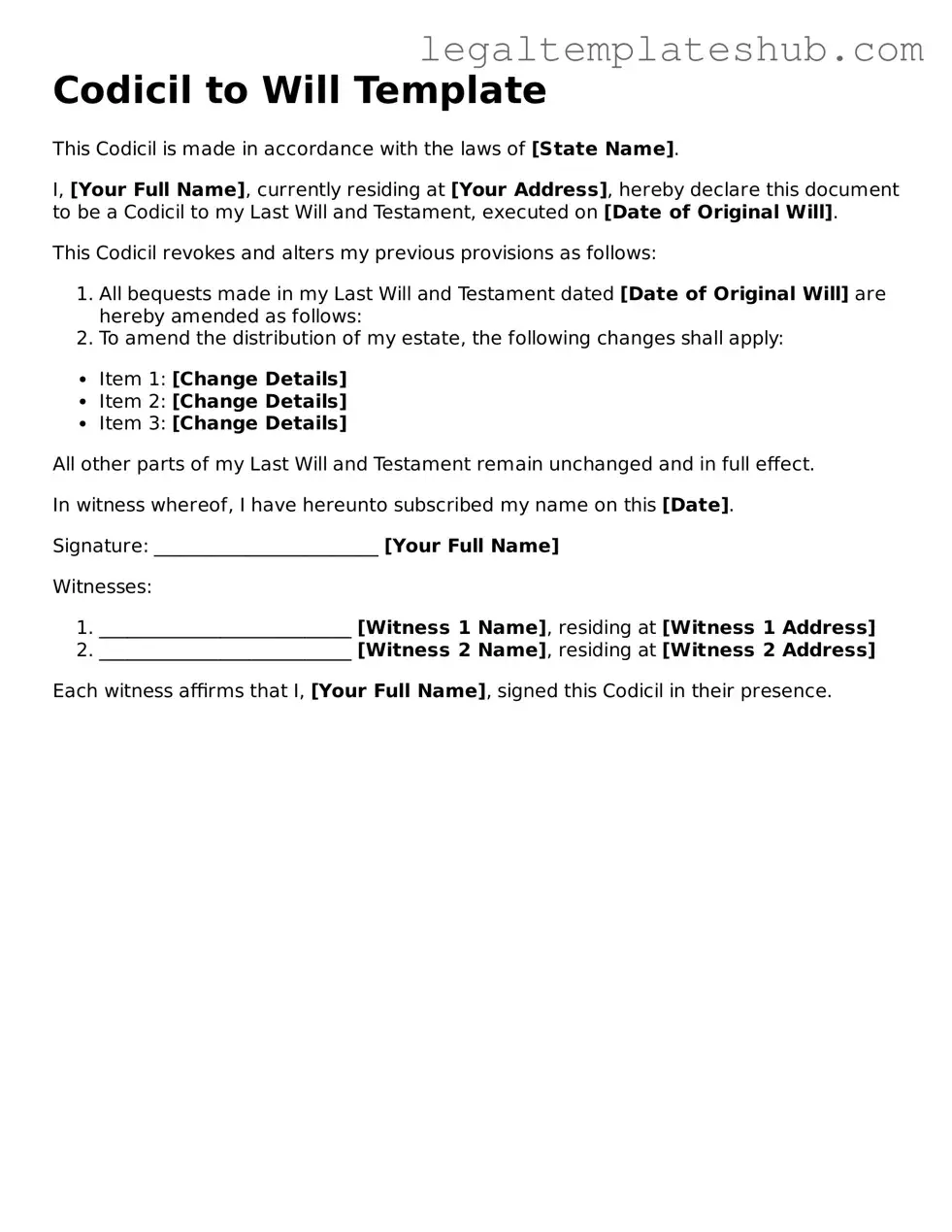Instructions on Filling in Codicil to Will
Once you have your Codicil to Will form ready, you can proceed to fill it out carefully. This document allows you to make changes to your existing will without having to rewrite the entire document. Follow the steps below to ensure you complete the form correctly.
- Begin by writing your full name at the top of the form.
- Next, include the date on which you are filling out the codicil.
- Clearly state your intention to amend your will. You can write a simple statement such as, "This codicil amends my last will and testament dated [insert original will date]."
- Specify the changes you wish to make. This could include adding or removing beneficiaries, changing asset distribution, or updating executor details.
- After detailing the changes, sign your name at the bottom of the form.
- Have at least two witnesses present as you sign. They should also sign the document, confirming they witnessed your signature.
- Finally, make sure to date the signatures of your witnesses.
Once completed, store the codicil with your original will in a safe place. It’s important to inform your executor or trusted family members about the location of these documents.
